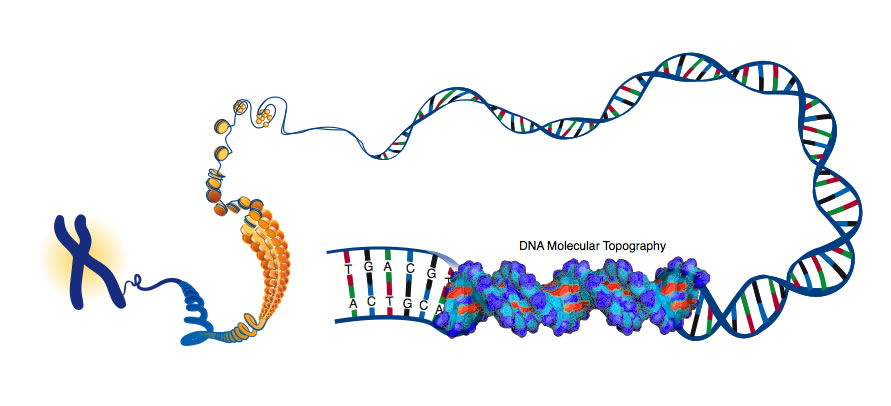
A chromosome is the structure for the efficient packaging of DNA that is found in the cellular nucleus. Humans have 23 chromosome pairs, typically one maternal and one paternal of each. The chromosome number will vary in some cases of viable aneuploidies.
Each chromosome has 2 “arms”

This illustration depicts DNA packed tightly into chromosomes, as well as a DNA molecule unwound to reveal its 3-D structure | credit: NHGRI https://www.genome.gov
When the chromosomal complement is BALANCED (any multiple of 23), it is EUPLOID
When the chromosomal number is NOT BALANCED, it is ANEUPLOID
Besides additional whole or missing chromosomes, chromosomes can have other structural changes, such as deletions (del), duplications (dup), insertions (ins), inversions (inv), many of which are associated with recognizable genetic syndromes, for example:
Not all structural changes have significance
Please log in to ObGFirst to access this page